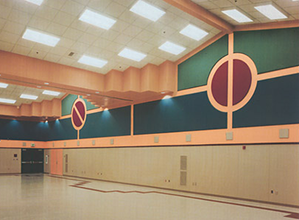How to Choose a Sound Control Door
Sound control can mean the difference between being able to have a normal conversation with ease and having to shout to be heard. Excessive noise can make it difficult to run a business, focus in a meeting, or learn in class. Choosing a sound control door for your business, regardless of industry, can be complicated. There is more to the decision than just price.
Factors to Consider when Choosing a Sound Control Door
Noise spreading from one area to another can interfere with a number of workplace operations. Employing rated sound control doors can make a big difference in how you manage noise within your organization. Here are several elements to consider when choosing the right sound control doors for your workplace.
1. Door Design and Use
Doors with high STC ratings are available in different designs depending on your application. These doors can be utilized in commercial buildings and industrial shops, or for recording studios and school band rooms.
For example, music studios often have wooden doors with windows. These may look like normal doors, but they have extra sound proofing between the physical door and the frame and high quality seals around both the glass and frame. While these doors are suitable for this type of environment, they would not be suitable for other uses.
As another example, solid metal doors are often found in industrial settings or as part of steel sound enclosures. These serve completely different purposes than those used in the music studio. The wooden doors would not be well suited to these industrial facilities.
2. STC Ratings
The Sound Transmission Class (STC) rating scale is a thorough guide that defines exactly how well a partition or structure can decrease moving sound by assigning it a numerical value that coincides with a level on its scale. STC levels are calculated by taking a decibel measurement on the originating side of a structure (such as a wall or sound control door) and dividing it by the sound levels recorded on the opposite side of the structure over several standard frequencies. These levels are then plotted on a graph and the resulting curve is then compared to the standards and assigned a value.
3. Frame and Door Construction
Sound control door frames are often made of wood or metal. Wooden doors and frames naturally muffle sound. However, metal doors and frames are filled with additional materials, such as spray foam, to deaden the noises they are meant to block.
Keeping these characteristics in mind can help you through the selection process for sound control doors. By understanding your specific needs and how products vary, you will be better equipped to choose the best solution for your organization.
eNoise Control is dedicated to helping you solve your noise control problems. If you want to learn more about your options, call us today at 1-888-213-4711.





